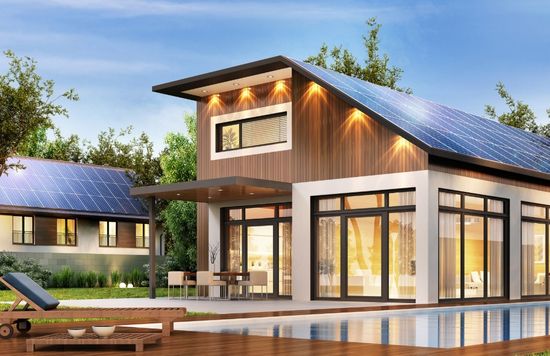Australia’s climate provides the country with numerous sunny days. Moreover, the amount of sun exposure increases in the summer when the days are longer. These combinations then create the ideal combination for the use of solar energy. On the other hand, summertime temperatures in Australia can easily reach extremes of up to 650C. And with such high temperatures come hot roofs and thus vulnerable solar panels. And these conditions are not limited to the summer. The country endures such conditions as storms, high winds and clouds annually, which significantly affect solar panel systems.


With such conditions as the norm, it leaves you, the consumer, responsible for making careful choices as you compare and select from solar panels for sale. The panels you settle on must be durable enough to withstand and thrive in Australia’s harsh environment. To give you an example of such a product, here is why the Max Power MPS-390N is ideal for Australian conditions.
Features That Make The MPs-390N Ideal For Australia
Right down to its most basic components, manufacturers of the Max Power MPS-390N designed it to perform and thrive in harsh Australian conditions. This specialisation begins with the parts they use. So, these panels prove superior from creation to performance and endurance by featuring everything, including N-Type cells, low-temperature coefficients, bifacial technology, dual glass and long warranties.
Some of the prime features and leading-edge technologies that make the MPS-390N a superior choice for Australian customers include:
Dual Glass For Longevity and Strength
The MPS-390N features a dual glass arrangement where there is a glass sheet on the front and back of each panel. This design specification differs from the present industry norm of glass fronts and plastic backs.
The primary benefit of using dual glass is extra durability and longevity. In addition, this design produces tougher panels overall, making them better able to withstand harsh environmental conditions.
The panels’ ability to hold up to high wind conditions is a testament to this toughness.
Dual glass panels are also more immune to moisture penetration. This difference is evident with plastic-backed solar panels whose sheeting is prone to peeling off due to constant exposure to extreme heat conditions. Once the backing falls away, it leaves the panel cells exposed to moisture, thus increasing the likelihood of panel failure.
Another advantage of glass backing is its cooling ability. Since glass helps heat escape faster than plastic, dual glass solar panels tend to remain cooler and perform better in the summer.
Low-Temperature Coefficient For Better Performance
Solar panels require ample sunshine to generate electricity. However, this doesn’t mean that higher temperatures translate to better performance. On the contrary, the ideal temperature for peak solar panel performance is 25°c. Anything above this figure has an inverse effect on the panel’s performance, with lower panel output percentages (high-temperature coefficients).
Conversely, a lower temperature coefficient translates to better performance in hotter weather- an essential feature for Australia’s hot weather.
The MPS-390N has a temperature coefficient of -0.31%. This figure is the best of any 390W solar panel model in Australia. Therefore, the Max Power generates more electricity on hot days than competing panels-perfect for Aussie conditions. As a result, you benefit from higher production yields and monetary savings throughout the system’s life.
Bifacial Technology For Enhanced Efficiency And Performance
Bifacial technology is a feature that enables solar panel cells to produce power using both the direct light they absorb from the front and the reflected light on the back. This ability results in enhanced performance and better efficiency for each MPS-390N panel.
So, with bifacial technology, Max Power panels are better positioned to maximise their exposure to strong, sunny Australian conditions and produce higher energy yields with resultant savings.
N-Type Cells
While Australia enjoys a lot of sunshine, it also experiences various weather conditions, including rainy and cloudy days. Therefore, it is best to have solar panels that can cope with such significant variations.
Max Power MPS-390N panels use N-Type cells as opposed to the standard P-type cells typical in most other panels. These N-type cells, however, have one major advantage: their efficiency and outstanding performance in low light conditions. This difference means on cloudy days or in low-light (for example, early morning and late afternoon hours), the 390N panels consistently generate more power than other types.
Backed With Long Australian Warranties
Solar panels typically come with two main types of warranties:
- The product warranty covers the external features, that is, the materials and quality of the panel.
- The performance warranty covers the panel’s output over time.
While most solar panels have a 12-to-15-year product warranty, the Max Power MPS-390N boasts an impressive 25-year warranty. This difference is a testament to this model’s superiority.
In Australia, regulations dictate that all solar panels sold within the country must contain a performance warranty. This requirement helps to account for decreasing energy outputs as the solar panel ages. Therefore, you will typically encounter performance warranties that cover 25 years. However, this figure does not guarantee that the panel will last that long.
In 25 years, most types of solar panels will lose about 20% of their power. On the other hand, the MPS-390N comes with an industry-leading 30-year performance warranty. These warranty terms stem from the fact that Max Power panels are warranted to maintain an impressive 87.4% power output 30 years after installing the solar panel system.
Therefore, the Max Power MPS-390N panel will consistently out-produce other solar panels over its operational lifespan. Thus opting for a Max Power allows you to enjoy more benefits and longer.
Conclusion
All the features and technologies contained in the Max Power MPS-390N combine to make it the ideal solar panel for withstanding the tough Australian conditions. Moreover, combining the unique benefits characterising each technological addition creates a powerful combination that translates to greater adaptability to variable conditions, better power production, and more savings.

























